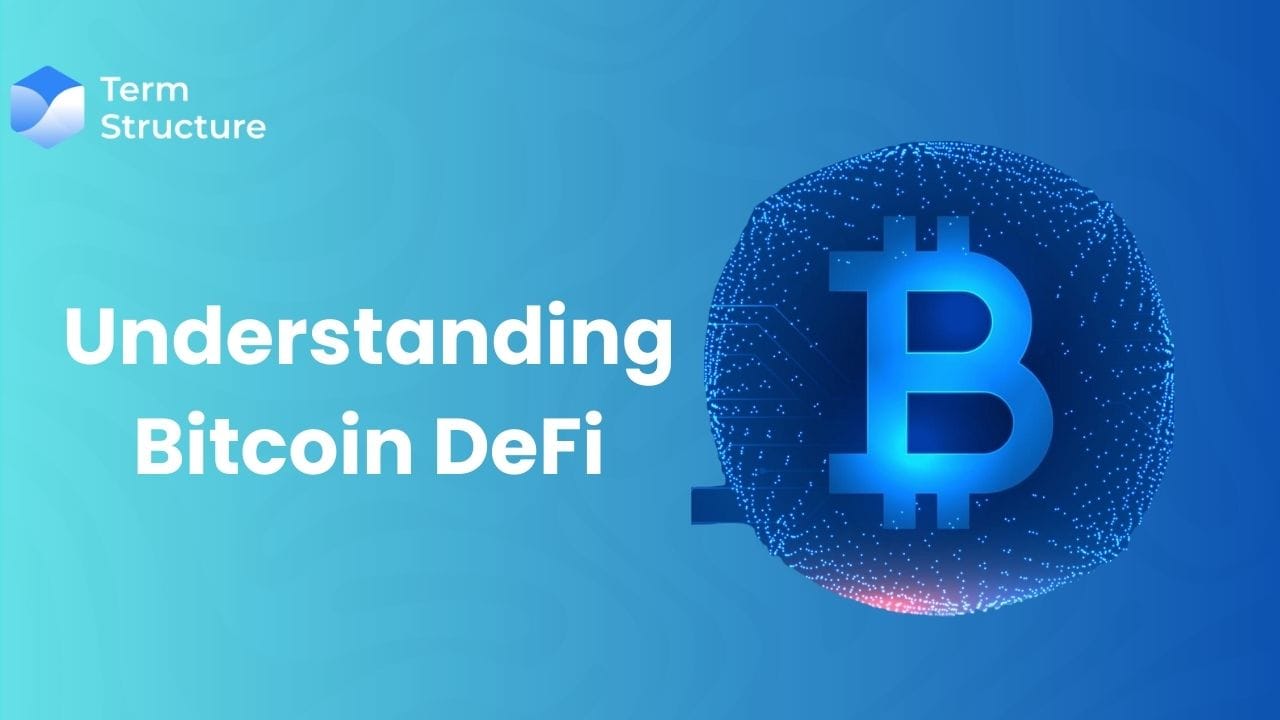Understanding Bitcoin DeFi.

The Evolution of Bitcoin’s Role in DeFi: The Rise of BTCFi
Bitcoin (BTC) began in 2009 with a simple goal: to be a decentralized digital currency that facilitated peer-to-peer payments. Over the years, it earned the reputation of "digital gold," valued for its strong security, decentralization, and ability to preserve wealth over time. Until recently, its role was mostly limited to a store of value, with little development beyond this.
However, the landscape started to shift with the emergence of smart contracts on the Ethereum (ETH) network in 2015, which introduced a new era of decentralized finance (DeFi). Ethereum's flexibility enabled the rise of decentralized applications (DApps) that offered financial services without middlemen. This led many to believe Ethereum would dominate DeFi while Bitcoin remained a store of value. But Bitcoin wasn’t ready to fade into the background. Through innovations like Layer 2 solutions, wrapped tokens, and new protocols, Bitcoin began to enter the DeFi space, leading to the rise of Bitcoin-focused DeFi, or BTCFi.
In this article, we’ll explore the evolution of Bitcoin’s role in DeFi, the emergence of BTCFi, how it compares to Ethereum DeFi, key players in the BTCFi space, and its future potential.
Understanding The Evolution And Emergence of BTCFi
BTCFi represents the growing ecosystem of decentralized finance applications and protocols built around Bitcoin. Initially, DeFi was driven by Ethereum-based platforms like Uniswap, Aave, and Compound, which offered token swaps, lending, and borrowing. Bitcoin, meanwhile, focused on security and value preservation.
However, with developments like Bitcoin’s Taproot upgrade in 2021, BTCFi began to grow. Taproot allowed for more efficient transactions and improved privacy, setting the stage for Bitcoin to take on a bigger role in DeFi. The Bitcoin community also explored other ways to make BTC compatible with DeFi, leading to the rise of Layer 2 solutions and wrapped tokens, allowing Bitcoin to be used in DeFi applications.
BTCFi vs. Ethereum DeFi: A Comparative Analysis
While both BTCFi and Ethereum DeFi aim to revolutionize finance, they differ significantly in how they operate:
- Liquidity and Assets:
- Ethereum DeFi has diverse tokens and trading opportunities, providing users with high liquidity and flexibility. DeFi on Ethereum supports complex financial instruments and large-scale trading.
- BTCFi, by contrast, is still building its liquidity. While it offers fewer assets and trading opportunities, this also creates potential arbitrage opportunities for early adopters.
- Smart Contracts:
- Ethereum relies heavily on smart contracts, with the Ethereum Virtual Machine (EVM) supporting complex decentralized applications (DApps).
- Bitcoin, by design, does not have native smart contract functionality. BTCFi projects often rely on side chains (like Rootstock and Stacks) or wrapped tokens (like WBTC) to emulate basic smart contract functions.
- Security and Consensus Mechanism:
- Bitcoin continues to use the Proof of Work (PoW) consensus, considered more secure but less energy efficient.
- Ethereum, after its transition to Proof of Stake (PoS), offers faster transaction speeds with greater energy efficiency, though some argue it’s less secure than PoW.
Key Players and Innovations in the BTCFi Ecosystem.
Several projects have driven the development of BTCFi, pushing the boundaries of what Bitcoin can do in decentralized finance:
- Taproot Assets (2024): Released by the Lightning Labs, Taproot Assets allows for the creation and transfer of tokenized assets on Bitcoin’s network. It utilizes the UTXO model for efficient transactions and supports both fungible and non-fungible tokens (NFTs).
- Lightning Network (2018): One of Bitcoin’s first Layer 2 solutions, the Lightning Network enhances Bitcoin’s scalability by enabling off-chain payment channels. This reduces transaction costs and speeds up transfers, making Bitcoin more practical for microtransactions.
- BitVM (2023): BitVM introduces Turing-complete logic to Bitcoin, enabling developers to create more complex DApps. While still in its early stages, BitVM opens the door for advanced smart contract capabilities on Bitcoin.
- Rootstock (RSK): RSK integrates full EVM compatibility into Bitcoin, allowing developers to build Ethereum-like smart contracts on the Bitcoin blockchain. It combines Bitcoin’s security with Ethereum’s programmability.
- Bitcoin Ordinals and Runes Protocol: Ordinals bring NFTs to Bitcoin by allowing data to be inscribed on individual satoshis, the smallest unit of Bitcoin. Runes enables the creation of fungible tokens on Bitcoin, further expanding Bitcoin’s capabilities.
The Future of BTCFi: Opportunities And Challenges.
BTCFi is still in its early stages but holds significant promise. As more projects build on Bitcoin’s security, the ecosystem will likely expand and become connected with other blockchain networks like Polkadot and Cosmos. These cross-chain connections could enhance BTCFi’s potential in the broader DeFi landscape.
However, BTCFi also faces challenges. Limited liquidity, basic smart contract functionality, and reliance on Layer 2 solutions may slow its growth compared to Ethereum’s DeFi ecosystem. Nevertheless, Bitcoin’s unmatched security offers an attractive foundation for long-term growth in decentralized finance.
Conclusion:
As BTCFi evolves, it is positioned to combine Bitcoin’s security with the programmability of Ethereum to create a new sphere of decentralized finance. While Ethereum’s DeFi ecosystem is currently more developed, Bitcoin’s advancements, such as Taproot and Lightning Network, make it a promising player in DeFi. BTCFi may soon offer more opportunities for traders, developers, and long-term investors looking to leverage Bitcoin’s robust network in DeFi.

